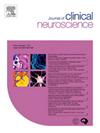批判性评价"脑动脉中SARS-CoV-2尖峰蛋白的表达:接种RNA疫苗后出血性中风的影响"
IF 1.9
4区 医学
Q3 CLINICAL NEUROLOGY
引用次数: 0
摘要
这篇通讯对 Ota 等人关于接种 mRNA 疫苗后 SARS-CoV-2 棘突蛋白在脑动脉中的表达的研究进行了批判性评价。虽然最初的研究有助于了解接种疫苗后可能出现的神经系统后遗症,但我们也发现了一些方法上的局限性。主要问题包括缺乏对照组、依赖核壳染色阴性来排除先前感染、样本量小且不平衡、缺乏病变特异性组织分析以及未经证实的 RNA 检测技术。这些问题共同削弱了与疫苗相关的尖峰蛋白持久性的因果推断。我们建议在今后的研究中改进方法,包括匹配对照、系列血清学检测、组织验证方案和健全的亚组分层。本文章由计算机程序翻译,如有差异,请以英文原文为准。
Critical appraisal of: “expression of SARS-CoV-2 spike protein in cerebral arteries: implications for hemorrhagic stroke post-mRNA vaccination”
This correspondence offers a critical appraisal of the study by Ota et al. on the expression of SARS-CoV-2 spike protein in cerebral arteries following mRNA vaccination. While the original study contributes to understanding potential neurological sequelae post-vaccination, we identify several methodological limitations. Chief concerns include the absence of a control group, reliance on negative nucleocapsid staining to exclude prior infection, a small and unbalanced sample size, lack of lesionspecific tissue analysis, and unconfirmed RNA detection techniques. These issues collectively undermine causal inferences regarding vaccine-related spike protein persistence. We recommend methodological refinements for future studies, including matched controls, serial serological testing, tissue validation protocols, and robust subgroup stratification.
求助全文
通过发布文献求助,成功后即可免费获取论文全文。
去求助
来源期刊

Journal of Clinical Neuroscience
医学-临床神经学
CiteScore
4.50
自引率
0.00%
发文量
402
审稿时长
40 days
期刊介绍:
This International journal, Journal of Clinical Neuroscience, publishes articles on clinical neurosurgery and neurology and the related neurosciences such as neuro-pathology, neuro-radiology, neuro-ophthalmology and neuro-physiology.
The journal has a broad International perspective, and emphasises the advances occurring in Asia, the Pacific Rim region, Europe and North America. The Journal acts as a focus for publication of major clinical and laboratory research, as well as publishing solicited manuscripts on specific subjects from experts, case reports and other information of interest to clinicians working in the clinical neurosciences.
 求助内容:
求助内容: 应助结果提醒方式:
应助结果提醒方式:


